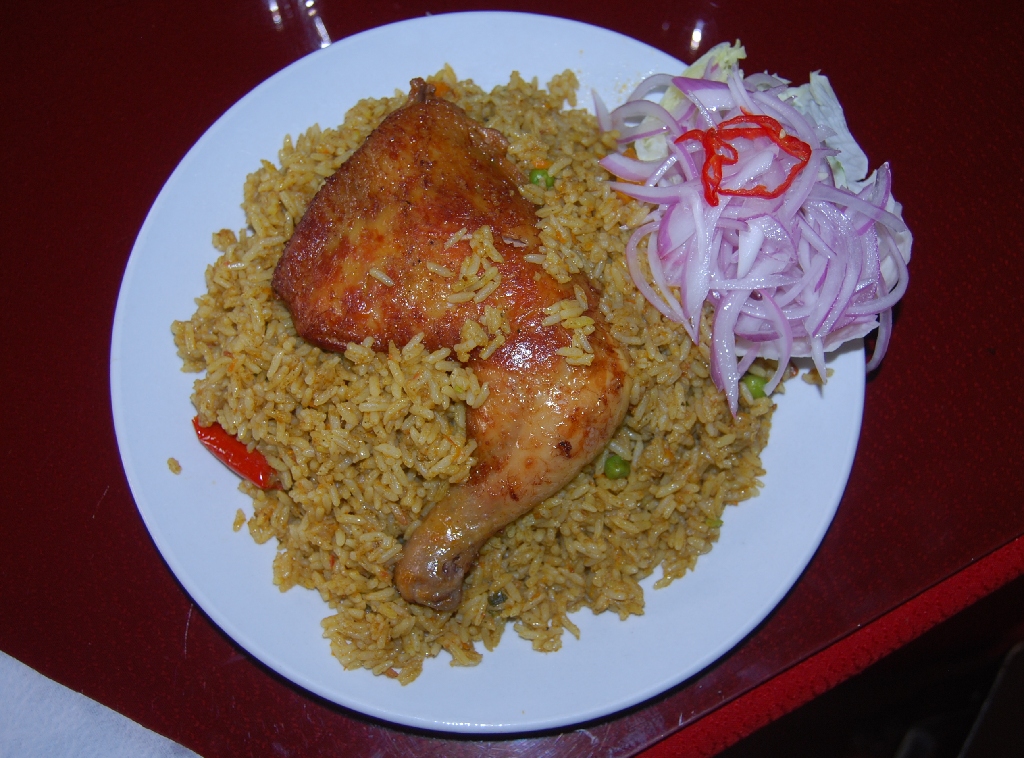As Time Goes on, Foods Disappear

Five blocks from the Plaza de Armas, the Main Square in Cusco is found the Cascaparo market, one of the most visited by the people of Cusco. In its food section more than 12 caseras (vendors) prepare different dishes from the list of traditional foods of our region for the hour of lunch. María Rosa, one of the caseras, has a stand where she has been preparing and selling food at lunch time based on the products of our region.
She tells that when she first arrived at the market to sell her food she did not have many clients, unlike now. I asked here what she did so that people would know here and come to eat her food. “I began to work here because in those days money would not stretch far enough and I had three young children in school. They would arrive for lunch, tired after their classes. I had to prepare nutritious foods thinking of them but also of my clients.”
“The majority of the people who come to my stand are people from the countryside. They work in the market selling things. They are not used to eating food with a lot of rice or noodles. Instead they want soups such as lawa de trigo with pork skin, (lawa is an indigenous crème soup), chuño cola with lamb, wheat chaqué soup, soup from lisas, chairo. These are what I make up during the week. They also want as main dishes tarwi (lupines) with boiled chuño (freeze dried potatoes), fish with chuño, lentils with quinoa, mustard greens with mote and puspu (dried and re constituted corn and dried reconstituted broad beans), lisas with rice, among others.” (Lisas are a native tuber.)

Up front in her stand you see her stove with three large pots where she makes her food. She also has plates and silverware, clean and ready to be filled with food. She has four plastic benches set in front of her stand.
When I arrived I asked her what she had for lunch. María Rosa answered me while her hands kept busy. “A wheat soup and tarwi with chuño. Have a seat casero (client) and I will serve you right away.”

I sat and waited just a few minutes before she served me up a big bowel of soup. It was a fiesta of color with diced carrots, potatoes, spinach, and wheat berries that had burst from cooking, along with the pork skin. Just looking at the soup made me happy and on my palate the products felt soft and filed with flavor.

Every spoonful was a pleasure. As I ate, the people of the market began arriving with their containers and they waited patiently one by one for her to fill them. There was no pressure. The people just waited to receive her attention.
When I finished the soup the casera (vendor) already had served up my main course. I lifted my spoon in my right hand and in my left the boiled chuño. It was wonderful. It had been a long time since I had last had tarwi with chuño. I had only eaten it before when my mother made it because in the city’s restaurants tarwi is almost always accompanied by rice and a meat stew. It was the kind of experience I had only had before at home.

When I finished my meal the casera María Rosa served me a glass of panti tea. Panti is a plant that grows in the countryside and has a light and refreshing flavor, ideal for relaxing. As I got ready to leave I asked her how much I owed. “4 soles with 50 cents” she said. “Tomorrow I am going to make a wheat chaqué with lamb. You should come, casero” she told me with a smile.
As the years have gone by many traditional foods such as chuño, moraya, wheat, quinoa, corn and others have been losing value for people. Diners today have exchanged those foods for rice and pastas. In the majority of Cusco’s restaurants, although not all, at lunch time the restauranteurs write on the blackboards dishes such as Cuban rice, rice and chicken (arroz con pollo), rice with fish, noodle scramble, and more. Of course it is a matter of taste.

I remember when I was a boy my mother would always take me with her when she went to the market to shop. Every weekend, Saturday or Sunday she would go buy food for the house. After we had spent the morning in the market she would make me up a soup of lisas which I loved or a soup of milled wheat (trigo chancado).
In our rural communities and the homes of ordinary people these traditional foods from our region are still consumed. If you are visiting Cusco and want to try our traditional, historical food you must go to the traditional markets where you can enjoy these dishes that are slowly disappearing.




